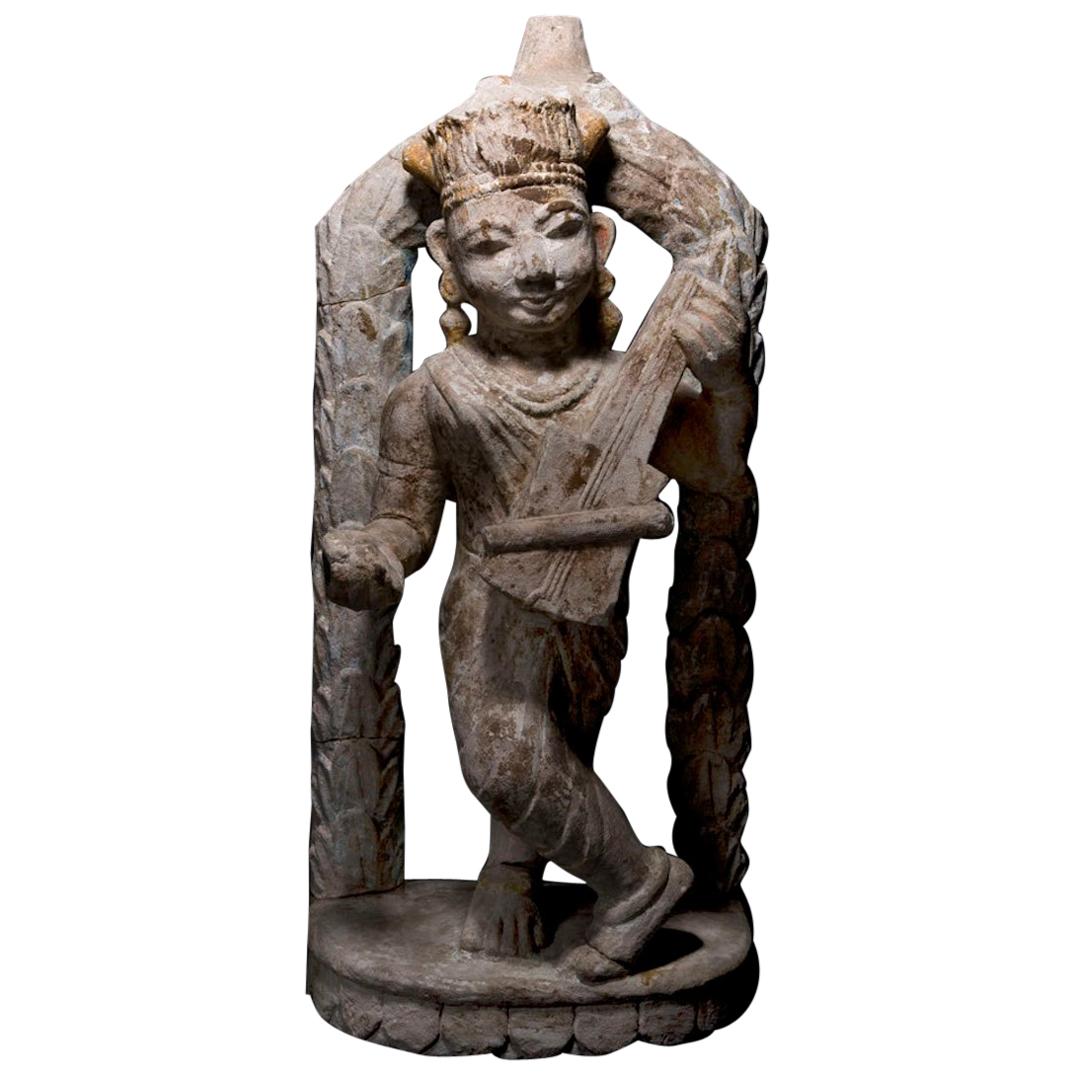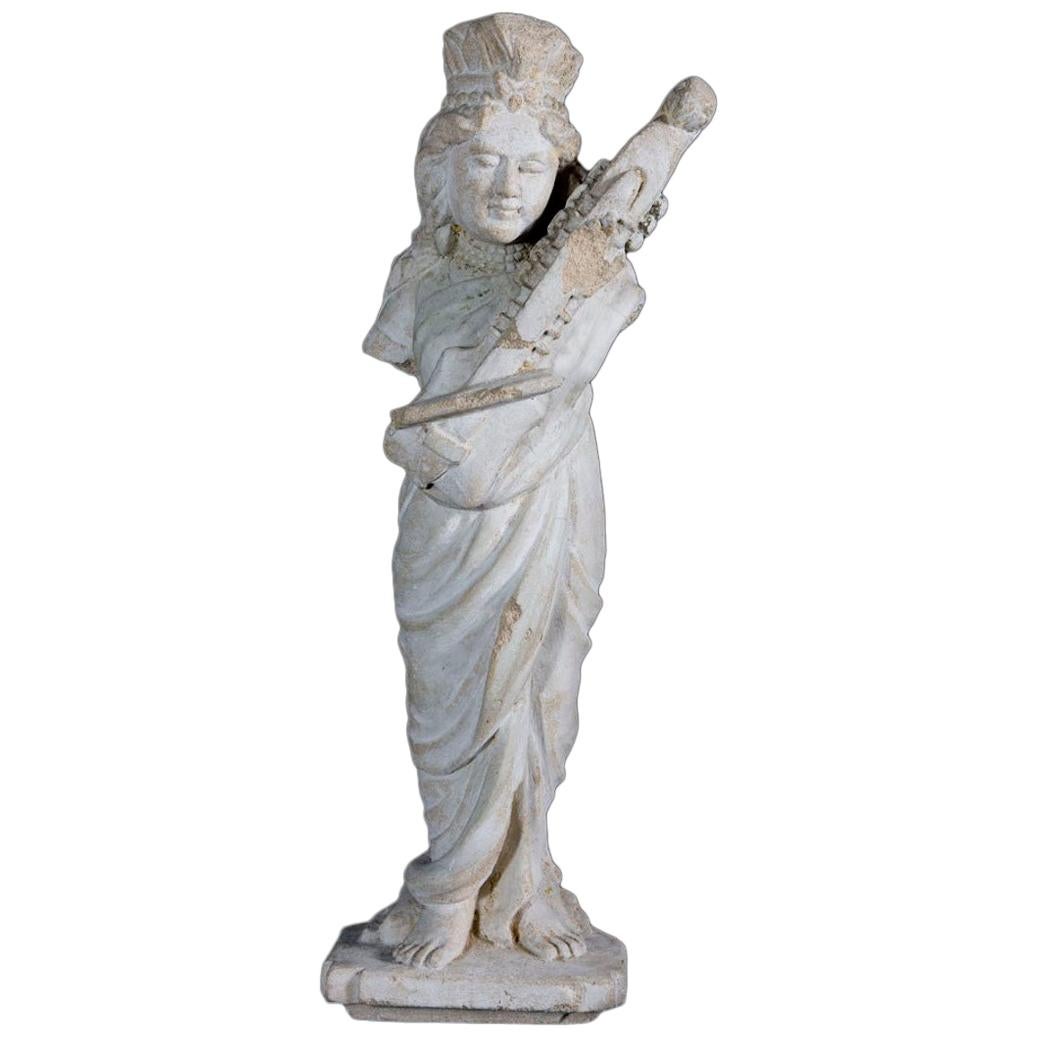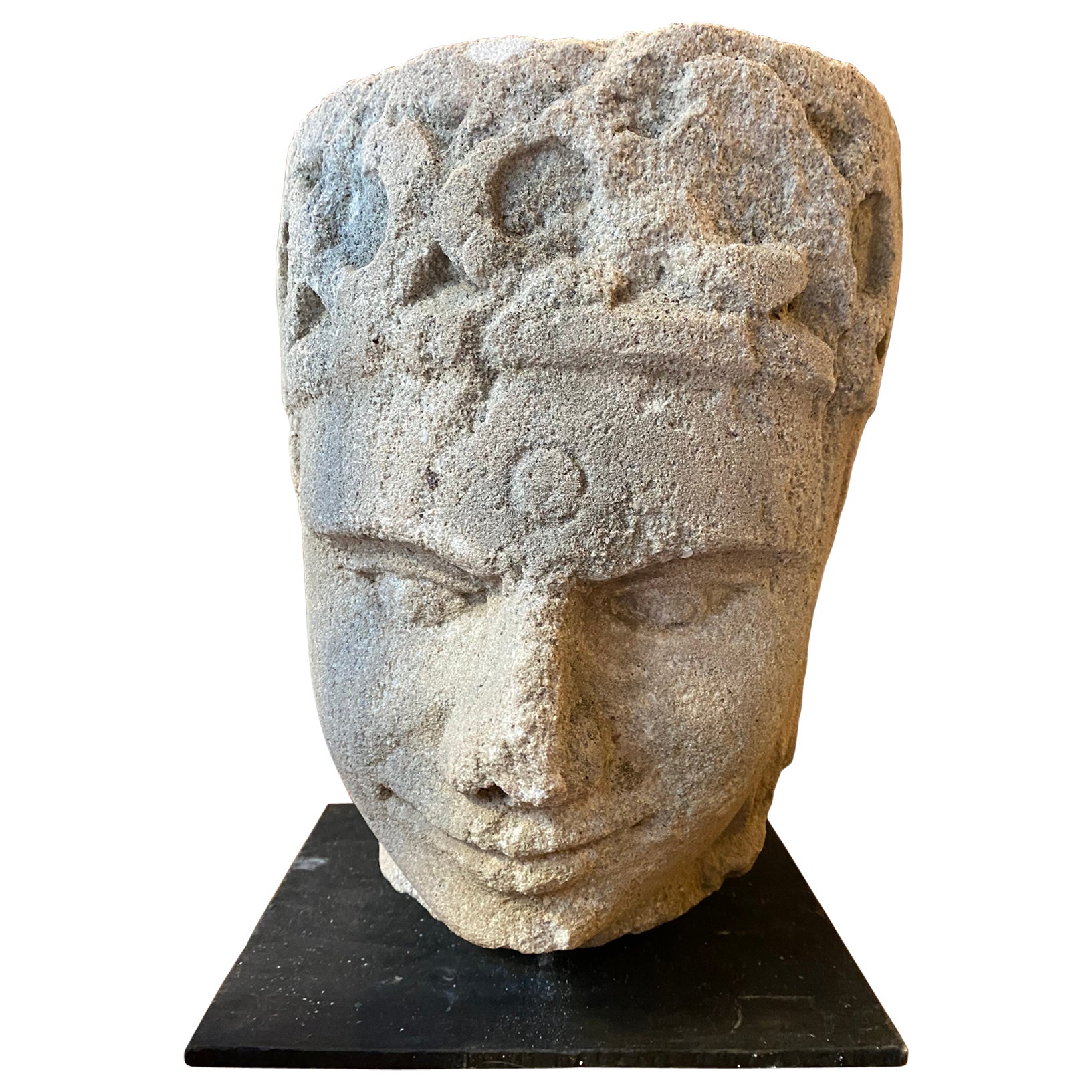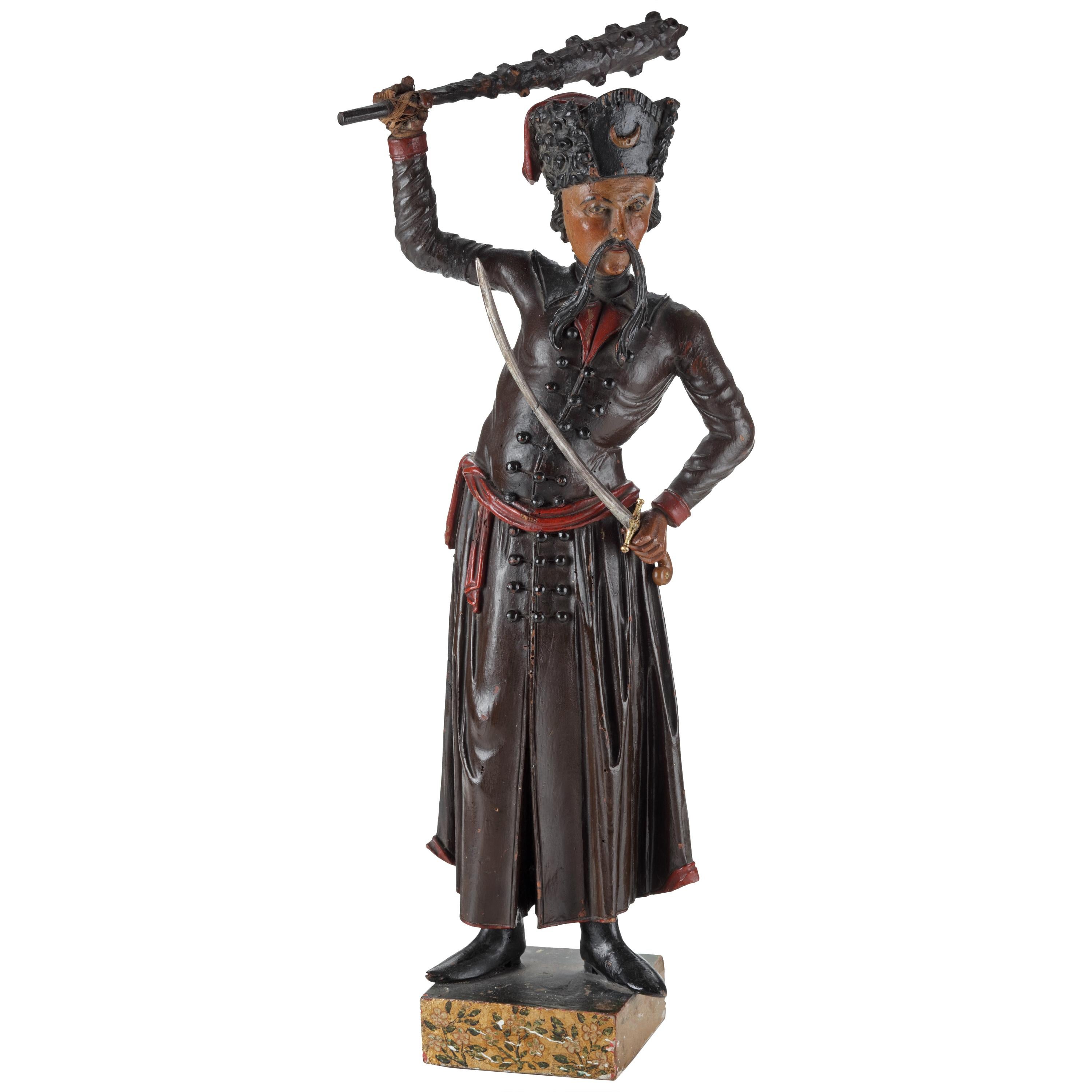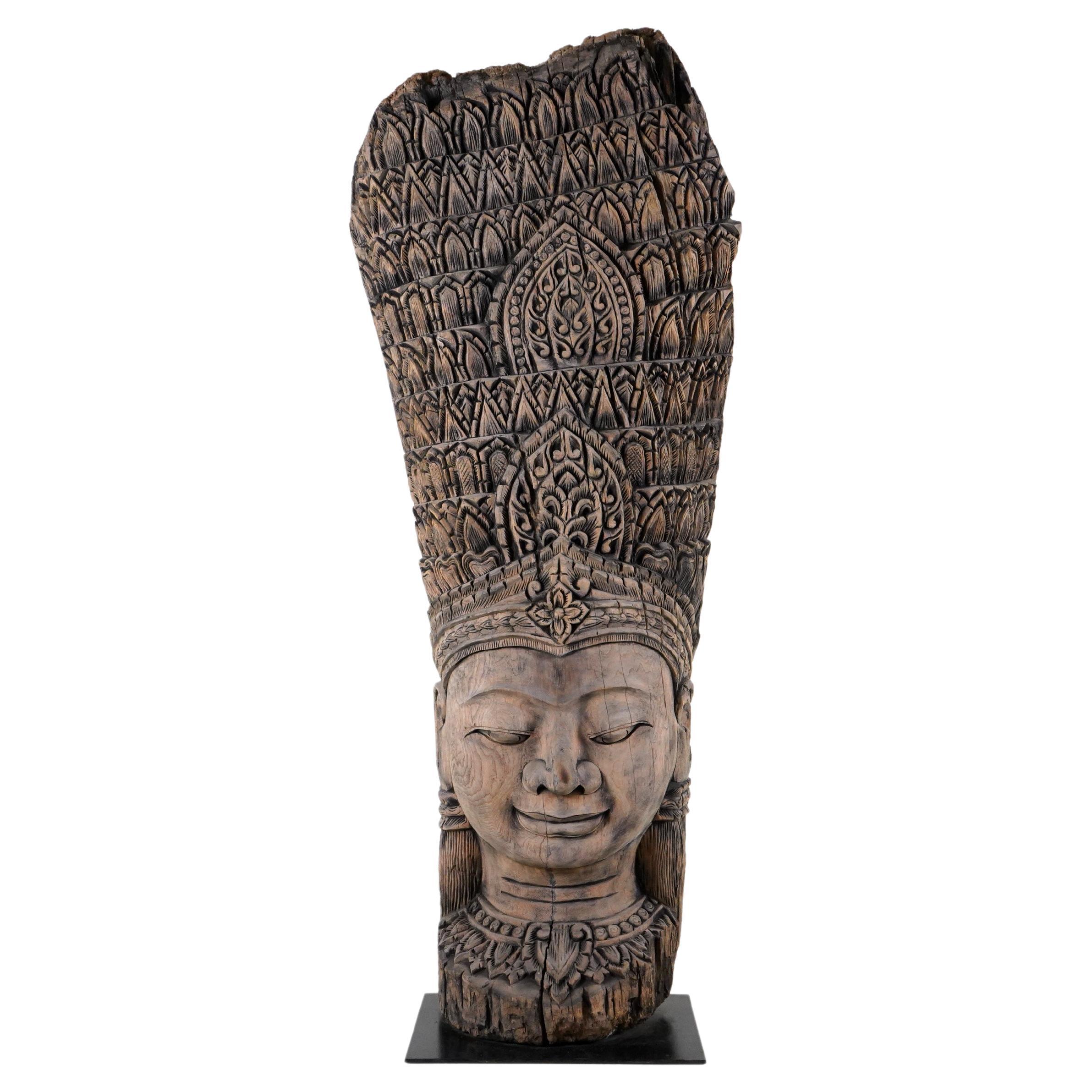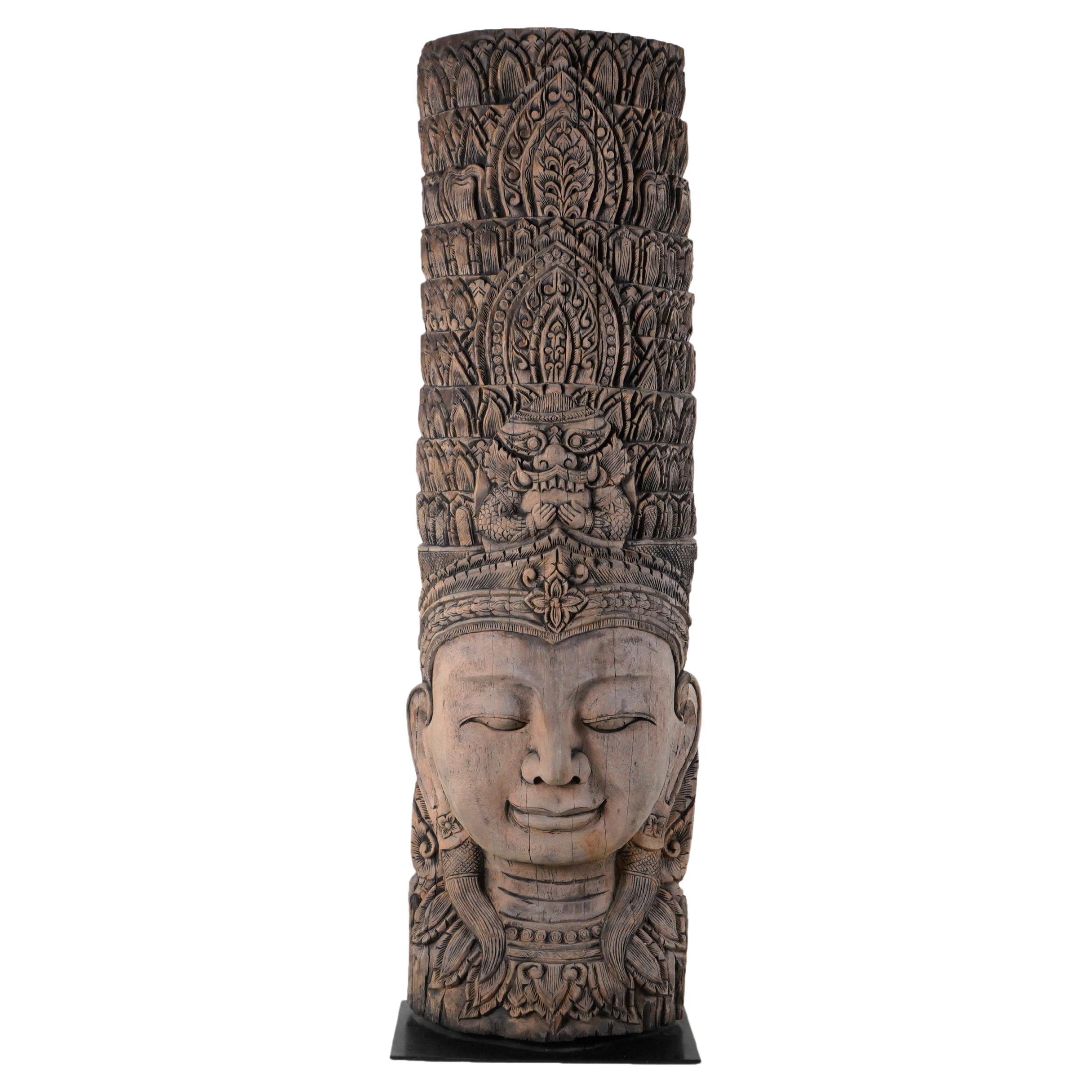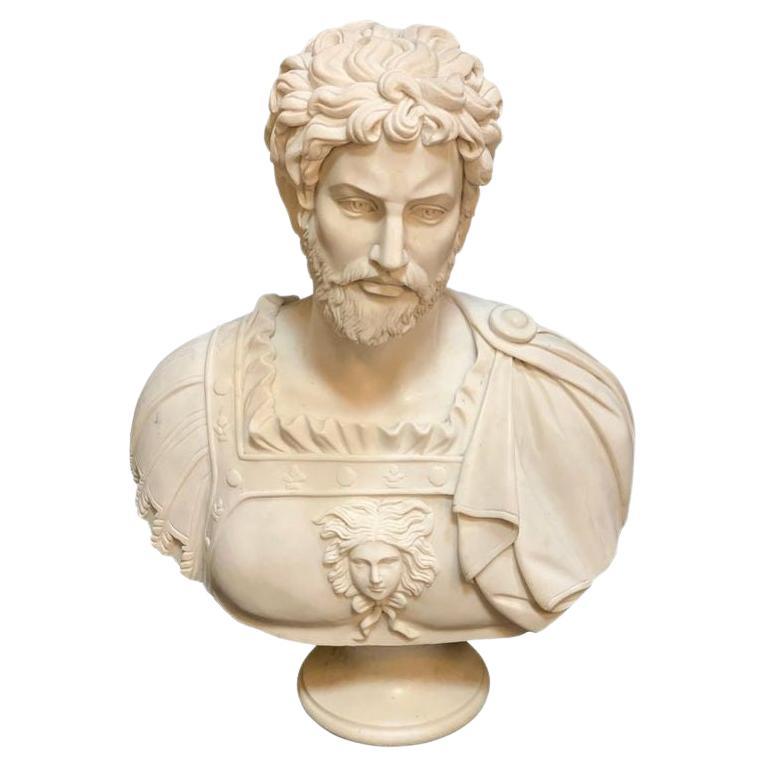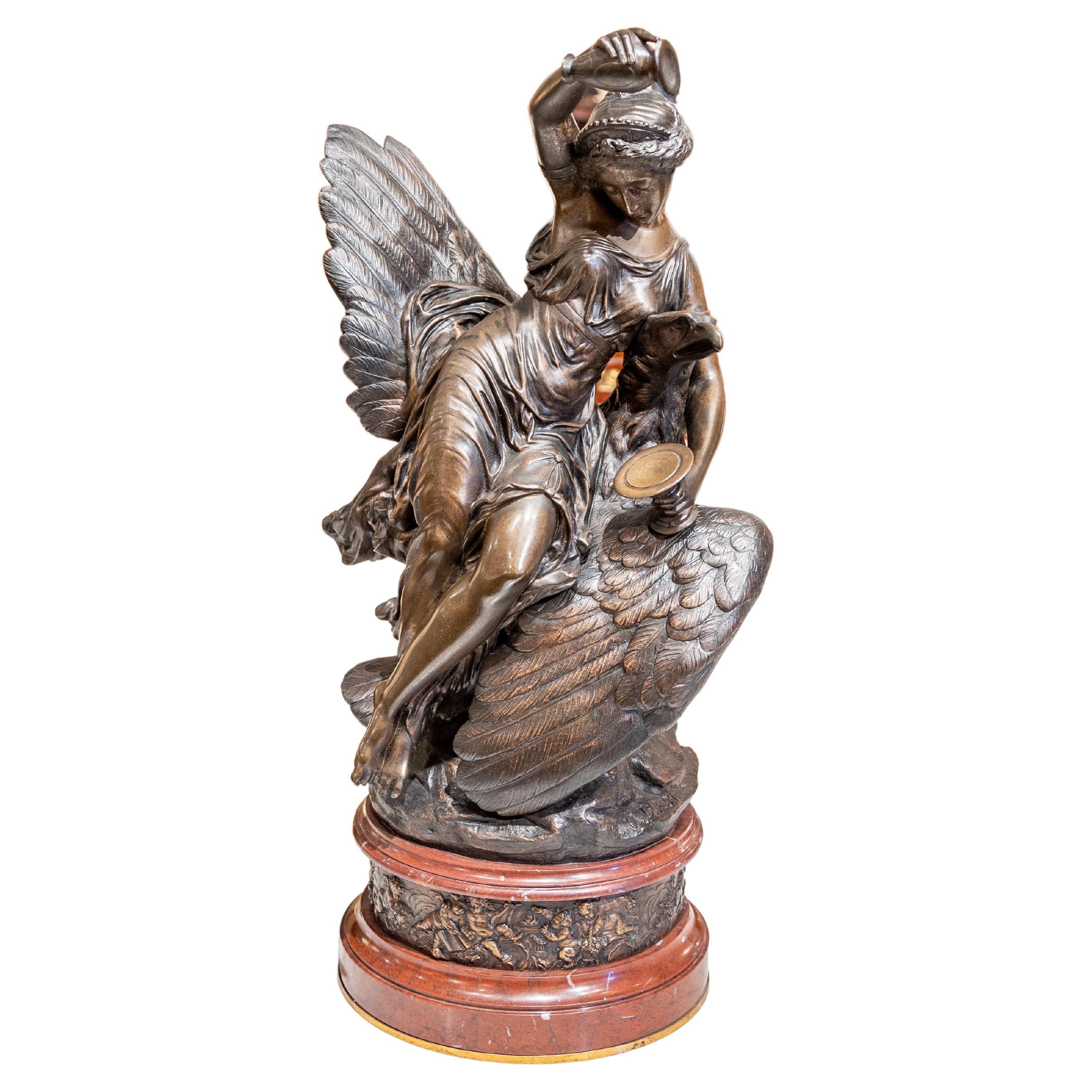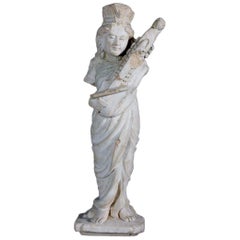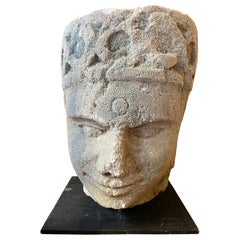
Indian Wood Sculpture of an Apsaras, 19th Century, India
View Similar Items
1 of 4
Indian Wood Sculpture of an Apsaras, 19th Century, India
About the Item
- Dimensions:Height: 37.01 in (94 cm)Width: 14.97 in (38 cm)Depth: 5.91 in (15 cm)
- Style:Other (Of the Period)
- Materials and Techniques:
- Place of Origin:
- Period:
- Date of Manufacture:1850-1860
- Condition:Wear consistent with age and use.
- Seller Location:Vigevano, IT
- Reference Number:Seller: 0015-00761stDibs: LU127726683703
You May Also Like
- Expressive Sandstone Sculpture of Apsara Playing Sitar, 18th Century IndiaLocated in San Pedro Garza Garcia, Nuevo LeonSandstone sculpture of Apsara playing sitar with dancing pose in front of a garland arch. Covered with rests of stucco and old painting with beautiful face expression and flower lotu...Category
Antique 18th Century Indian Figurative Sculptures
MaterialsSandstone
- Elegant Sandstone Sculpture of Apsara Playing Sitar, 18th Century, IndiaLocated in San Pedro Garza Garcia, Nuevo LeonElegant sandstone sculpture of apsara playing sitar with missing arms with a beautiful face and a high tiara and pleated robes. It comes with a custom Lucite base. Weight: 21.3 lb...Category
Antique Early 18th Century Indian Figurative Sculptures
- Stone sculpture of an Indian woman from late 19th centuryLocated in BORDEAUX, FRBeautiful stone sculpture featuring an Indian woman wearing earrings and a crown with rounds patterns carved. Mounted on a modern iron basement you could easily remove it. Its simpl...Category
Antique Late 19th Century Indian Anglo-Indian Figurative Sculptures
MaterialsGranite
- Orientalist Turkomania Wood Sculpture of an Ottoman, Early 19th CenturyLocated in Amsterdam, NLA carved and painted wood 'TURKOMANIA' sculpture of an ottoman soldier French or Dutch Turkomania, early 19th century Depicted in standing position, with a sword in one hand and a club in the raised other, with a fur hat, long moustache and long coat, on a square base. Measures: H. 58 cm Note: During the Dutch War of Independence from 1568 till 1648, the Dutch and Turks were allies against Roman Catholic Spain and the slogan of the Dutch was “liever Turks dan Paaps” (rather Muslim than Roman Catholic). In 1612 the first Dutch ambassador arrived in Istanbul. Nevertheless, in Holland, there was also the image of the cruel and heretic Turk stemming from the frequent violent clashes between Dutch ships and the pirates from Algiers, usually called the “Turkish pirates”. When the Ottoman armies advanced against Vienna, in the eyes of many Europeans the Islam bent on destroying Christianity. Later in the early 19th century, although the Turkish threat to Europe was long gone, the image of the Turks deteriorated again because of the Greek uprising. The Sultan Mahmud II understood that Turkey had to modernize along West European lines and among other things in 1808 he replaced the “picturesque” oriental clothing...Category
Antique Early 19th Century Dutch Figurative Sculptures
MaterialsWood
- A Teak Wood Sculpture of a Cambodian Apsara GoddessLocated in Chicago, ILNewly carved from reclaimed teakwood, this bust takes the form of a Cambodian apsara. With origins in Hindu and Buddhist mythology, Apsaras are female spirits of the clouds and water...Category
21st Century and Contemporary Thai Figurative Sculptures
MaterialsTeak
$4,900 Sale Price44% Off - A Teak Wood Sculpture of a Cambodian Apsara GoddessLocated in Chicago, ILNewly carved from reclaimed teakwood, this bust takes the form of an apsara. With origins in both Hindu and Buddhist mythology, Apsaras are female spirits of the clouds and waters. T...Category
21st Century and Contemporary Thai Figurative Sculptures
MaterialsTeak
$5,200 Sale Price39% Off
